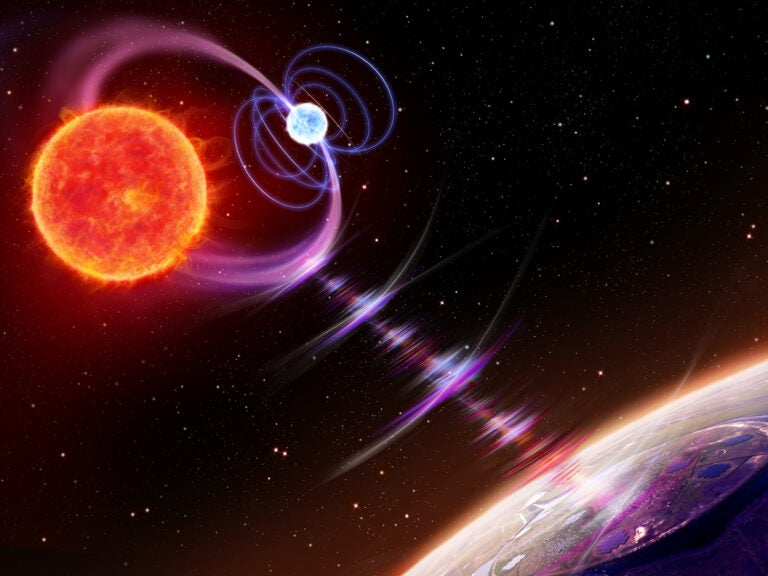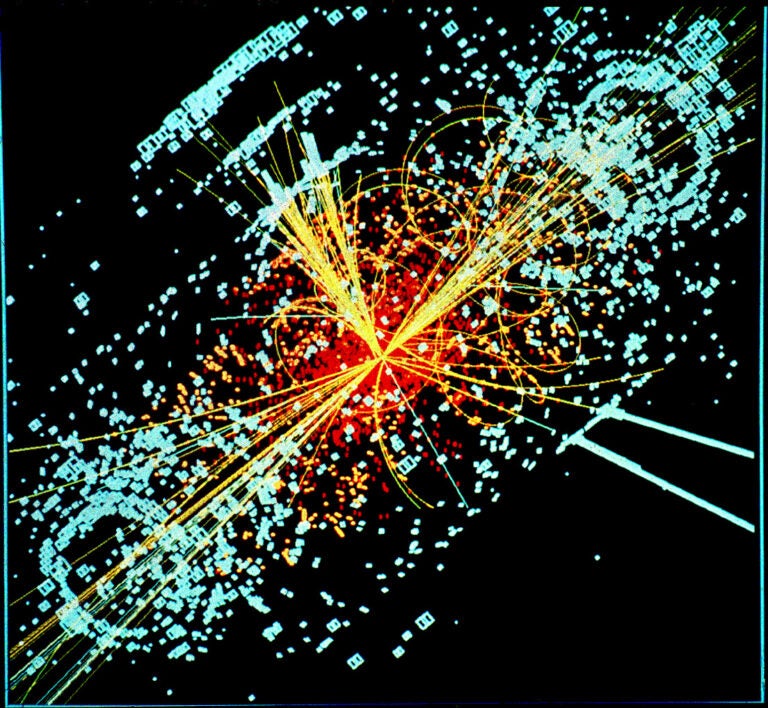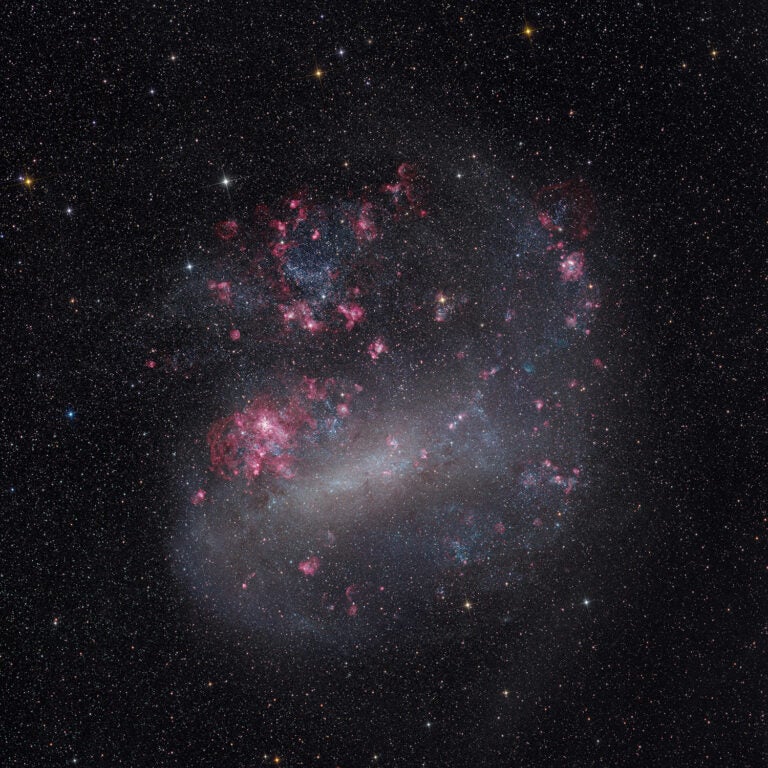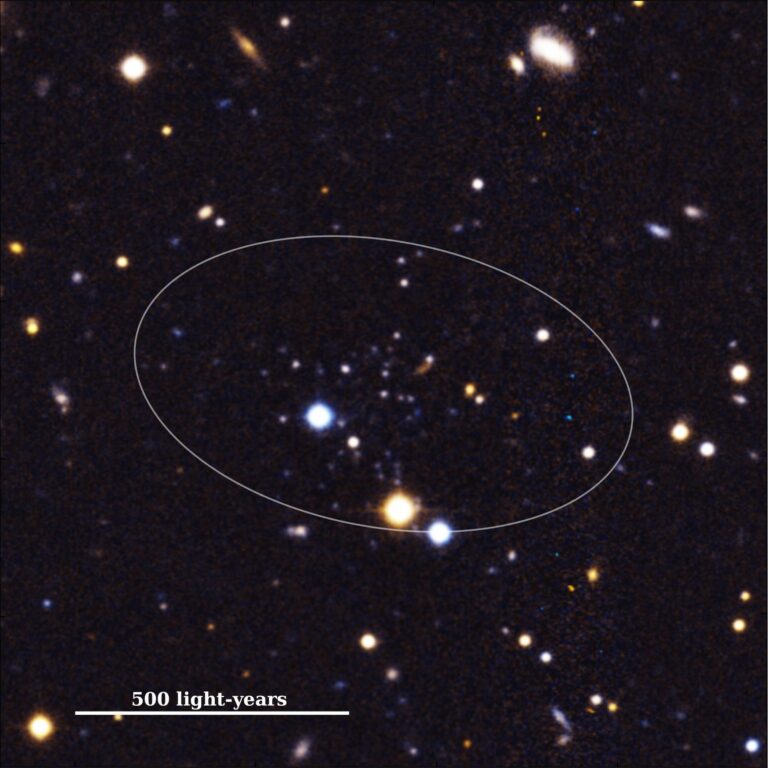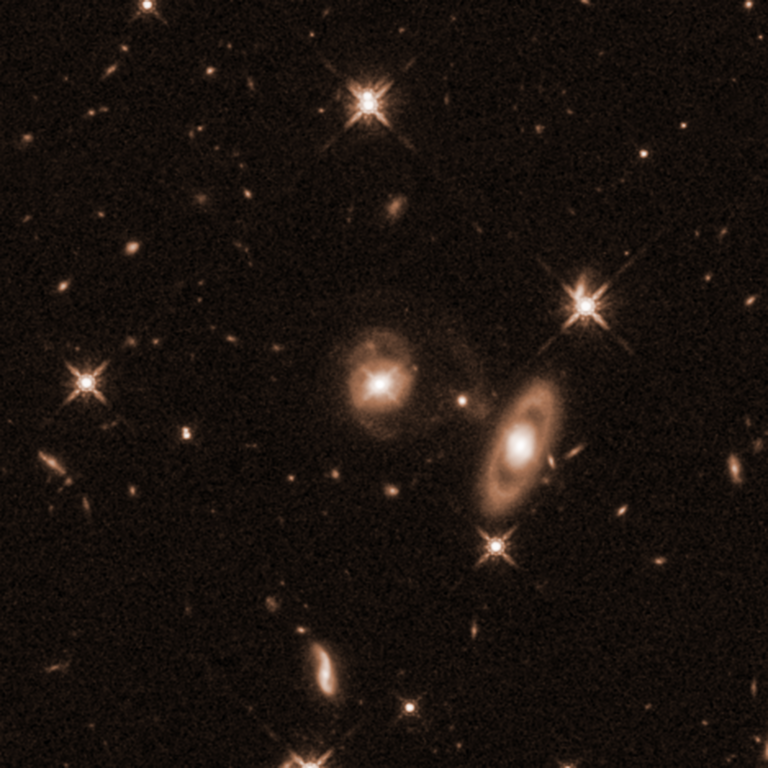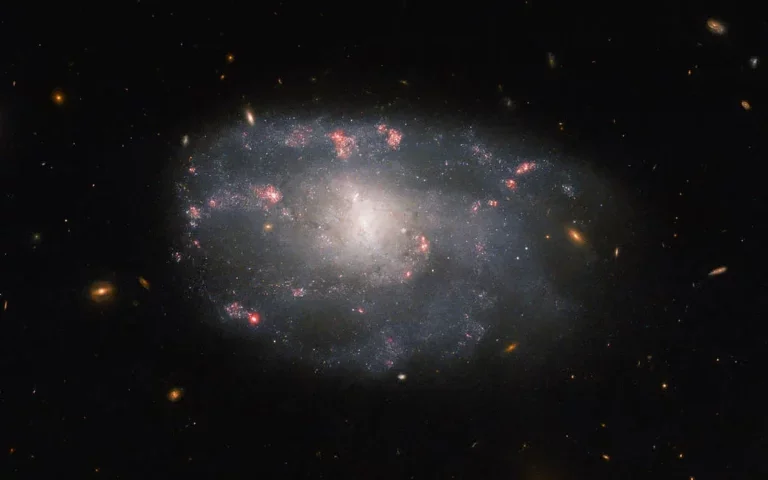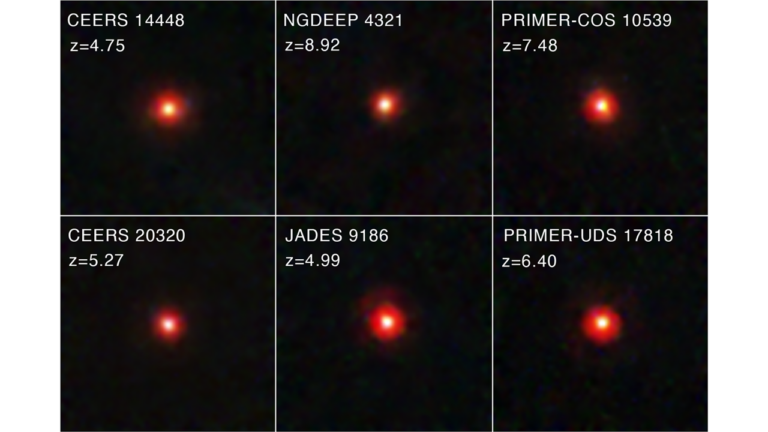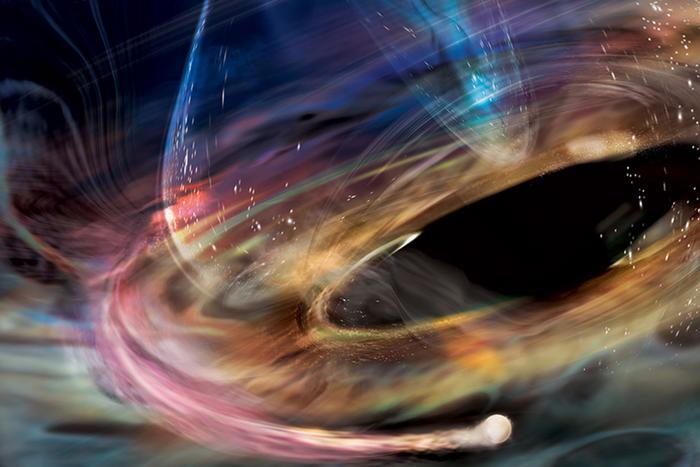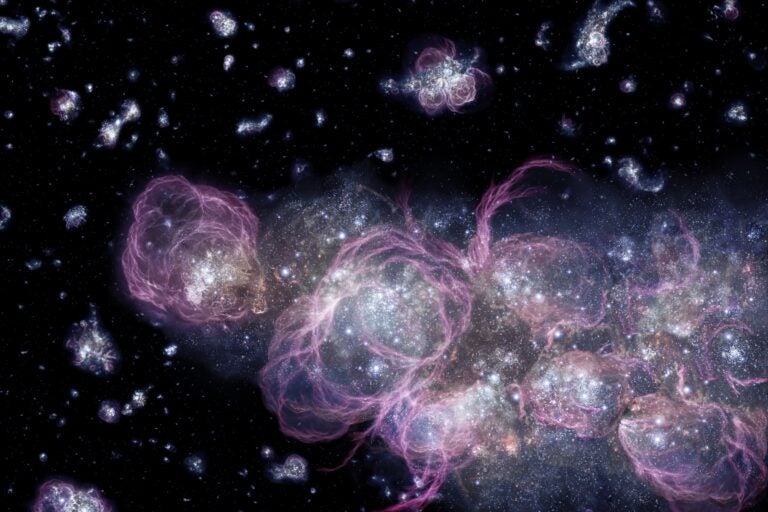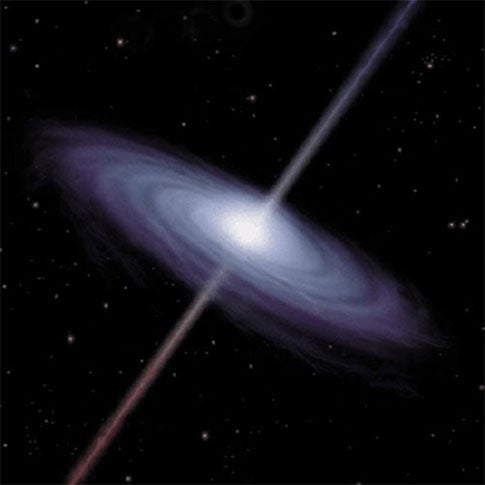
This artist’s impression of a supermassive black hole highlights the accretion disk of gas and stars swirling around the black hole, and the jets of material ejected along the poles. Supermassive black holes are found even where galaxies are sparse and interaction is minimal. These black holes accrete matter at a slower rate than black holes in denser galactic environments.
A. Kamajian/NASA
The simplest explanation is that a relatively small “stellar-mass” black hole forms early in the universe and grows incrementally over the eons to develop into the jumbo variety.

